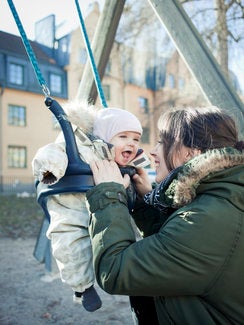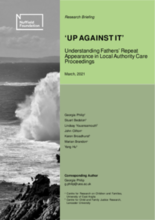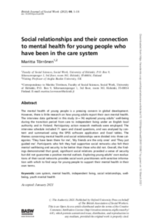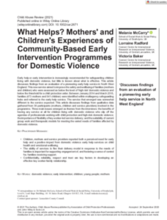

Displaying 251 - 260 of 1585
This mixed methods research project, involving twenty participating local authorities and eight voluntary organisations from a wide geographic spread across England, was carried out between 2017 and 2019. The study was designed to investigate fathers and their recurring appearance in care proceedings at a macro, meso and micro level, with each element collecting and analysing data for distinct but related research questions.
"One-third of foster carers have said that a lack of structure for their foster children during the Covid-19 pandemic has been a challenge, according to a new survey," says this article from the Irish Times.
The interview data gathered in this study explored young adults’ well-being during the transition period from care to independent living under an English local authority and in Finland.
The overall aim of this article to gain updated knowledge on how children and youth who have received or are receiving child welfare (CW) interventions from the Nordic CWS fare in relation to suicidality.
This event will feature a discussion of how data-informed initiatives are having a direct impact on improving services and outcomes for children and young people in need of care and protection in Scotland.
This article explores evidence which shows that the use of ‘private family arrangements’ is motivated partly by a concern for subsidiarity, and partly by necessity: they provide a source of placements in cases where regulatory requirements and a lack of resources would otherwise make the placement challenging or impossible.
"Unregulated homes for children in care under the age of 16 will become illegal in England from September," according to this article from BBC News.
In this article, Sky News follows the court case of a 16-year-old in the UK with no parents, carers or home, who has repeatedly threatened to kill herself.
This article discusses findings from an evaluation of a pioneering early help service in North West England. This new service aimed to improve the safety and wellbeing of families (mothers and children) who were assessed as below the level of ‘high risk’ domestic violence and below the threshold for a child protection order.
This article explores the possibilities of a systemic approach in the support of parents whose children are placed in public care.



